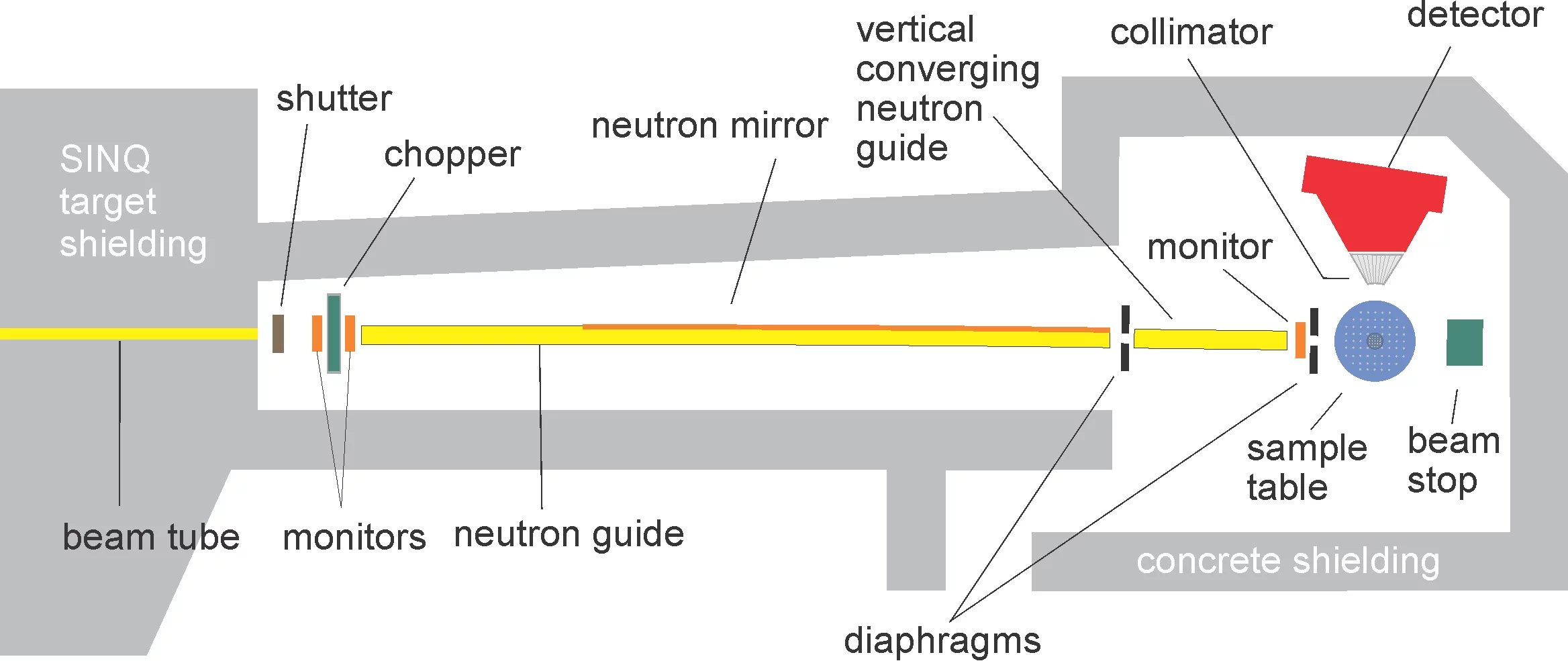In the figure below a sketch of the POLDI instrument is presented. The concrete shielding serves as protection of the environment from high-energy neutrons, which are much more intense at a spallation source compared to a reactor source. The continuous neutron beam is converted into a pulsed beam using a multi-slit neutron chopper. This beam is then focussed onto the sample position by a long elliptical neutron mirror. The distance between the chopper and the sample position is about 11.8 m.
Before the sample position two diaphragms are placed. The first diaphragm D1 influences the horizontal beam divergence whereas the second diaphragm D2 is used to control the beam size, which determines the gauge volume in two directions. The third dimension of the gauge volume is then determined by a radial collimator, placed in front the detector.
More detailed information about the POLDI layout can be found in the following paper:
U. Stuhr, H. Spitzer, J. Egger, A. Hofer, P. Rasmussen, D. Graf, A. Bollhalder, M. Schild, G. Bauer, W. Wagner
Time-of-flight diffraction with multiple frame overlap Part II: The strain scanner POLDI at PSI
Nuclear Instruments and Methods in Physics Research A 545 (2005) 330-338. ([PDF)
In the following sections the most important parts of the instrument are briefly described:
SINQ - call for proposals I-26
proposal submission deadline: 15 January 2026
The Digital User Office will be open for proposal submission approximately 4-5 weeks before the deadline. Of course editing and saving of proposals is possible any time.

